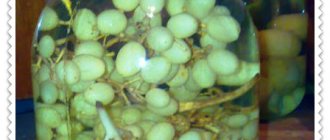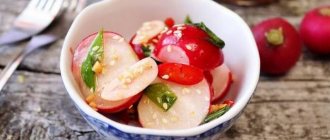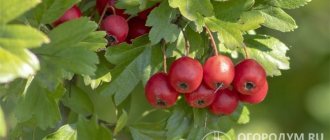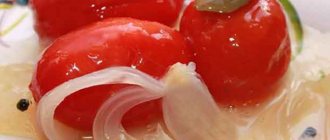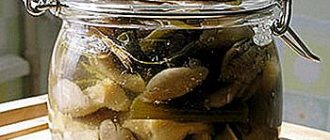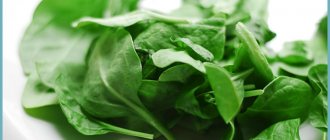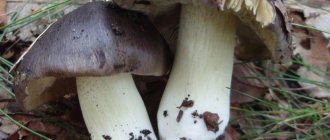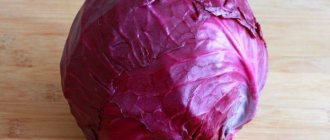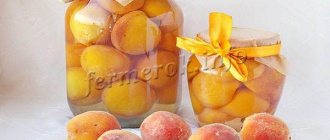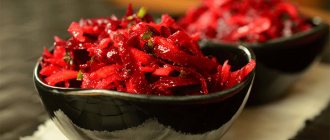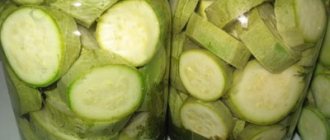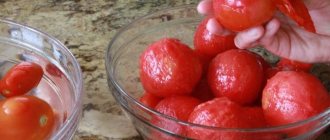Apple is the second most popular fruit in the world. It is not only a delicious fruit, but also a storehouse of carbohydrates, minerals, vitamins, and antioxidants. The fruits are consumed in their natural form, used for jam, marmalade, jam and juice.
The benefits of a processed product are as great as those of raw fruits, because even during heat treatment the fruit retains the maximum amount of nutrients.
It’s very easy to prepare a vitamin drink from apples for the winter; we have collected the best recipes for you.
How to properly make a juicer with a juicer
If you have a juicer, you can significantly save your time in the process of making apple juice for the winter. She will also become your personal assistant in creating various recipes for juices based on apples, with the addition of other vegetables or fruits. Such juices are also called blended. That is, mixed.
The most popular additives for apple juice are grapes, pears, plums and currants. And among the vegetables, zucchini, carrots, tomatoes and pumpkin predominate.
If we talk about the quantitative ratio of blended juices, the ideal would be 1 to 1. That is, for every kilogram of apples there is a kilogram of another fruit or vegetable . Granulated sugar is added mainly to taste, but you should not exceed the limit of a hundred grams per liter of finished juice.
The process of making blended drinks goes like this: all the ingredients are passed through a juicer, and ready-made juices are mixed. And this mixture must be sealed either by sterilizing or pasteurizing. This is the most important basic to remember.
Selecting apple varieties for making a drink
Before choosing the variety of the main fruit to create apple juice for the winter, you need to decide on the final result that you want to get.
So, depending on the variety, the finished drink may come out sweet, or maybe sour.
Apples "White filling"
In addition, big fans of apple juice with pulp should pay attention to the following varieties:
- Antey;
- White filling;
- Freedom.
These apples themselves have a dense structure, so the finished juice is guaranteed to have a lot of pulp.
Apples "Antonovka"
And those who like sourness in taste should take a closer look, for example, at Antonovka and Nizhegorodka. By the way, professional chefs highly recommend canning juices made from sour apples. They last an order of magnitude longer than sweet juice.
A very important point! It will be useful to learn to distinguish between summer apple fruits and those that ripen quickly enough. In addition, you should not mix different varieties with each other. And even more so - sour and sweet. This will be completely unnecessary.
Cider recipe from concentrated juice
Ingredients (for about 25 liters of finished cider):
- 5 kg concentrated juice
- 20-25 liters of clean water
- 1 packet of yeast
Optional:
- dextrose (for carbonation)
- yeast nutrition (according to instructions)
- Campden tablets (for wort sterilization)
- malic acid (to lower pH)
Equipment:
- 33 liter primary fermenter
- water seal with rubber seal
- glass secondary fermenter
- LCD thermometer
- hydrometer AS-3 (Brix 0-25%)
- graduated cylinder for hydrometer
- calibrated pH meter or indicator paper
- equipment for bottling and capping beer or...
- equipment for bottling and capping wine
Notes on ingredients
Concentrated juices
Concentrated juice is obtained by evaporating or freezing water from directly pressed natural juice. Due to the high sugar content (up to 70%) and short-term pasteurization, the concentrated juice can be stored in aseptic packaging for up to 24 months at room temperature. Such a product does not require additional sterilizing agents, which means it can be fermented with yeast without any problems. Our online store offers concentrated juices from apples (with acidity 1.5% and 2.5%), pears, raspberries and cherries. All of them are equally suitable for making high quality cider. To obtain reconstituted juice for further fermentation, the concentrate must be diluted with water in a ratio of 1 to 5 by weight. No other procedures are required.
Cider made from pear juice is called perry. This drink is very popular in England, where it is made completely dry and often without carbonation. In France, fermented pear juice is called poiré - it is much sweeter than its English counterpart and is usually carbonated using champagne technology directly in the bottle.
Yeast for cider
To make cider, you can use different strains of pure yeast cultures (PYC). The best solution would be specially cultivated cider yeast, such as Cider Yeast M02 from the New Zealand company Mangrove Jack's and Safcider from the French manufacturer Fermentis. These strains provide stable, clean fermentation under difficult conditions, have good flocculation (settle quickly to the bottom of the fermenter), and during fermentation promote the release of esters that unlock the full potential of fruit juices. Cider yeast can ferment at low temperatures (up to 12°C), which is preferable for this type of raw material. Also, various strains of yeast for champagne, white wines and mead have worked well for fermenting cider. Interesting results are shown by various ale yeasts, which are best used to make semi-sweet cider without additional sweeteners. All CKD strains can be used without rehydration.
Instructions for making cider from concentrated juice
- Disinfect all equipment you plan to use with chlorine-containing disinfectants (Star San, Sani Clean, Melkko, etc.).
- Pour the contents of the concentrated juice canister into the primary fermenter. You can rinse the canister with a small amount of warm water to wash away any remaining viscous juice.
- Add 2-3 liters of warm water to the fermenter and mix thoroughly. Bring the total volume of the wort to 25-30 liters by adding clean, settled water. If you have a hydrometer, measure its gravity - for cider the specific gravity (SG) should be at least 1.045-1.050, which corresponds to 11.18-12.37% Brix (for a hydrometer). This density is sufficient to obtain a completely dry drink with a strength of 5.8-6.5%. To increase density, the required amount of dextrose can be dissolved in the reconstituted juice. You also need to measure the pH level of the wort, which after diluting the concentrate with water may be higher than the required level (3.9-4 pH or 0.6% acidity). To lower the pH, you can use malic acid or a special acidic mixture for winemaking. Sour wort ferments better and is less susceptible to bacterial contamination.
- Add 1 crushed Campden tablet to the fermenter (optional, can be replaced by maintaining complete sterility) for every 4-5 liters of wort, stir. Cover the fermenter with a lid and leave it alone for 24 hours.
- After 24 hours, add yeast to the wort, close the fermenter tightly and install a water seal. For a more stable and predictable fermentation, you can add a yeast nutrient to the wort before pitching the yeast. Move the fermenter to a dark place with an ambient temperature of 18-24 ° C until the end of vigorous fermentation. Active vigorous fermentation will last 6-9 days, depending on the density of the wort, ambient temperature and other factors. When fermenting fruit and berry juices, in world practice it is often customary to maintain a lower temperature (12-15 ° C) - this increases the fermentation time, but has a positive effect on the taste and aromatic qualities of the drink.
- An indicator of the end of fermentation will be the absence of carbon dioxide bubbles in the water seal, and the specific gravity of the wort will decrease to approximately 1.005 SG (1.5-2% by hydrometer). At the end of rapid fermentation, drain the young cider using a siphon into a secondary fermenter (preferably made of glass), install a water seal and place it for secondary fermentation in a dark place with a temperature of 12-15 ° C.
- Secondary fermentation should last at least 30 days, even if there are no signs of it. But in order for the cider to achieve ideal transparency and harmonious taste, the time period should be increased to 2-3 months, and once a month the cider should be drained from the resulting sediment.
- Once secondary fermentation is complete (specific gravity drops to 1.000-0.995 SG or 0% hydrometer), the cider, which tastes like a young, dry, weak wine, can be bottled. At this stage it can be sweetened to taste and also carbonated.
Carbonation of homemade cider
Dextrose is most often used to naturally carbonate cider:
- Before bottling cider clarified after secondary fermentation, add ½ tsp to each 0.5-0.7 liter bottle. dextrose for moderate carbonation and 1 tsp. dextrose - for strong.
- Seal the bottles tightly and leave for 3-4 days at room temperature. During this time, the yeast, having received a new portion of food, is activated and will begin to process dextrose to produce carbon dioxide.
- After this, bottles of already carbonated cider need to be moved to the refrigerator for 10 days, where re-fermentation will be stopped. Sparkling cider is ready!
You can also use a “primer” for carbonation: save 1-2 liters of reconstituted juice in the freezer, and then add it, after defrosting, to the secondary fermenter immediately before bottling the finished cider. But the dextrose method is more reliable and predictable. It is recommended to keep bottled cider in a dark, cool place for another 2-3 weeks before tasting. Before serving, it is recommended to cool the drink to 12-14°C.
Traditional apple juice recipe
If this is your first time trying to prepare apple juice at home for the winter, then you can start with the traditional recipe. After all, it is the lightest and does not require any additives.
Sugar is added there to taste only if the juice is too sour for you. Once you have mastered this basics, you can then move on to more advanced recipes.
Components:
- Apples - as many as you have;
- Sugar - optional.
First of all, do not forget that the jars where your juice will be stored must be sterilized.
When sorting and washing the apples, be sure to cut off all rotten areas and cut out the core.
Usually, to obtain juice, a juicer or a meat grinder is used. Or they grate it and then squeeze out the pulp through gauze.
Since today we are talking about making juice using a juicer, use one for these specific recipes. And then, the option with this device is the easiest and most convenient. And it requires much less power compared to other methods.
Filter the drink prepared in a juicer and pour it into a large saucepan or deep bowl. It is important that the cookware is not aluminum .
Place the pan on gas and bring to a boil as quickly as possible. But here you need to have time to catch the moment when the juice begins to bubble. When you notice small bubbles, remove the foam that appears and turn off the gas.
Filter the drink through a gauze cloth. Taste the juice and add granulated sugar if necessary. Add sweetness to taste, but try not to exceed the amount of a hundred grams per liter of liquid.
Heat the juice again to about eighty degrees. Pour it hot into jars, seal and let cool. You can leave them indoors for the first couple of weeks, and then be sure to move them into the dark and cool.
In the traditional recipe, it is not necessary to heat the juice again. This is needed more in order to get rid of sediment in advance, which may form later. But this sediment in no way affects the taste of the drink or the duration of its storage.
At the same time, the use of this pasteurization option in the process of making apple juice for the winter is excellent if the jars have to be stored in a heated room.
The best children's apple juices
I'm an apple with pulp
A good option that is suitable for every child. The product does not contain any harmful preservatives or dyes, therefore it is completely safe for the baby’s body. There is pulp, it is felt well when consumed. Processing method: sterilization. It contains only juice and puree, not even sugar. The screw cap can be easily unscrewed and closed without any extra effort.
Once opened, it can be stored for no more than one day, after which the product begins to deteriorate, and the fermentation process can be felt within a couple of days. The type of drink is reconstituted, homogenized. Treatment – sterilization, which is a good solution. When closed, the product can last for 12 months, the main thing is to follow the recommended storage conditions.
The average cost is 90 rubles.
juice I Apple with pulp
Advantages:
- Popular brand;
- Good taste;
- Rich and bright light;
- Pulp present;
- Optimal price;
- Frequent discounts.
Flaws:
- Not detected.
Santal Apple
Another popular brand that will appeal to many customers. There are no unnecessary additives in the composition, only natural ingredients. Of course, the product is diluted with water, but you hardly feel it. There is no sugar in the composition, but the product still retains the sweetness that comes from apples. The packaging is ordinary, it cannot be said that it is in any way different from other designs, the only thing is that the picture is more attractive.
When producing this drink, we were guided by our own specifications. But this does not prevent the product from being tasty. In addition, this specimen participated in the “Natural Selection” show and became a winner in all respects. The taste of the drink is soft and clean, no impurities are felt, which speaks positively about the quality. The water concentration is not as high as many cheap brands.
The average cost is 120 rubles, but there are copies at a discount, in which case the price varies: from 80 to 90 rubles.
juice Santal Apple
Advantages:
- Soft taste;
- Nice colour;
- Convenient packaging;
- Reliable information;
- Relatively low price.
Flaws:
- There are no significant ones.
Pridonya Gardens Apple
The juice is obtained by direct extraction, which helps preserve all the beneficial elements in the drink. Only fresh apples that have undergone careful control are used in production. There are no GMOs or other artificial additives in the composition. Processing method: pasteurization. The product is clarified. It contains only juice, not even sugar. Recommended for children 3 years of age and above.
Sold in many stores, and can often be found at a discount. Energy value – 44 kcal. Another positive point is that the juice passed the Roskachestvo test and received high marks, including for the reliability of the information. The sweetness is noticeable, but it is natural and unobtrusive, like some specimens.
The average price is 88 rubles.
juice Sady Pridonya Apple
Advantages:
- Direct spin;
- Good packing;
- No sugar;
- Affordable price;
- Moderately sweet.
Flaws:
- Not found.
Good Apple
The product contains no sugar, preservatives, dyes, GMOs, etc. All this is replaced by natural apples grown in Russia. The taste is rich and refreshing. There is no desire to wash down the drink with water. Sold in cardboard packaging with a convenient lid that opens effortlessly but ensures a tight seal. Suitable for feeding children over 3 years old. The only thing that some children may not like is a slight sourness.
The average cost is 120 rubles.
Dobryi Apple juice
Advantages:
- Good taste;
- Made from ripe apples;
- Purified water is used;
- Saturation;
- Naturalness.
Flaws:
- High price.
Recipe: tomatoes in apple juice for the winter
We bring to your attention such a sudden, non-standard, but very interesting recipe for canning tomatoes in apple juice for the winter. The juice in this case will act as a marinade. This recipe is sure to become a favorite for those who do not like or cannot have tomatoes canned with vinegar. Everything is done quite simply.
Components:
- Tomatoes - how many will fit in a liter jar;
- Apple juice – 1 liter;
- Salt – 1 tablespoon;
- Spices - to taste;
- Hot water - for pouring tomatoes.
Wash the selected tomatoes and make punctures at the base with a toothpick or fork. Then place the fruits in a pre-sterilized jar. Pour hot water over the tomatoes for a quarter of an hour. Then drain the water and repeat the procedure.
Sprinkle the tomatoes with salt. If desired, you can add spicy seasonings. But this is not for everybody. Bring apple juice to a boil and pour over tomatoes. Seal the jar, turn it over and let it cool. Your tomatoes in apple juice are ready for the winter!
Apple juice without pulp
Many people really like to drink juice without pulp or sediment. Making this apple juice for the winter using a juicer is really easy. Just follow the recipe provided.
Components:
- Apples – 3 kilograms;
- Sugar – 2 tablespoons.
Wash the apples thoroughly and cut into quarters. Don't forget to remove the tail and core. Pass the fruits through a juicer. The original juice will be quite cloudy.
That's why it needs to be filtered. You can use gauze, bandage or cotton as a filter.
There is no need to boil the strained juice. It will be enough to warm it up to eighty degrees. And now you can pour it into jars. Add sugar while heating. Before sealing the jars, they must be sterilized already filled.
Juice without pulp is considered one of the most popular among fans of this drink.
Classic apple juice recipe
The juice is squeezed out of the prepared apples, filtered and poured into the prepared container. Now, the main thing is to quickly heat it to 90 degrees until foam appears, which is immediately removed. Some boil for up to 15 minutes, others simmer by reducing the heat.
Then it requires repeated straining, adding (if desired) sugar and light heating at 80 degrees.
The finished product, while hot, is poured into sterilized glass containers, sealed tightly, turned upside down and covered with warm clothes until it cools. Place for storage in a cool place where light does not pass through.
Apple juice with pulp
Interestingly, there are quite a lot of variations for making juice from apples with pulp and they are all different. Here is one of such variations.
Components:
- Apples – 3 kilograms;
- Sugar – 2 tablespoons;
- Water – 1 glass.
Cut the washed fruits into medium pieces, place them in a saucepan and press down on top with some weight. Under pressure, the apples will give juice. When this happens, add sugar to the water and boil.
After removing the fruit from the gas, mash the pieces with a wooden pestle to a puree and put it on the gas again for about five minutes. After pouring the juice into jars, sterilize it for twenty minutes before sealing. Now you can roll it up. Enjoy!
Drink made from apples with pulp
It is not always worth getting rid of valuable substances lost during the clarification of drinks. Without a juicer, you can make juice with pulp without removing valuable fiber and a large amount of nutrients.
For preparation you will need:
- apples - 3 kg;
- drinking water - 1 l;
- syrup - 1 l.
For syrup, add 2 cups of water to 2 cups of sugar and bring the solution to a boil. The further preparation process step by step looks like this:
- Peeled apples are cut into pieces and the seeds are removed along with the core.
- Cut the fruits into small slices up to 2 cm thick. Place the raw materials in a thick-walled pan.
- Add water to the cooking vessel, put it on the fire and wait until it boils. Next, warm up for another 15 minutes.
- Remove the container from the stove and puree the contents using an immersion blender or crush with a potato masher.
- Syrup is poured into the resulting mass and placed on the stove again to heat.
- Boil the juice for no more than 5 minutes, cool and rub the mixture through a metal sieve.
The drink should be heated to a boil again, immediately poured into warm sterile jars and rolled up. Place the lids down to cool and check for leaks, wrap and cool.
The resulting juice with pulp is useful for intestinal diseases. And prepared without added sugar, it is a valuable dietary product.
Apple-pumpkin juice for the winter with citrus fruits
This variation of juice for the winter will be an excellent solution for strengthening the immune system. Keep in mind that the ingredients for making apple-pumpkin juice for the winter are indicated in this list for one liter jar.
- Apple juice – 0.5 liters;
- Pumpkin – 0.5 kilograms;
- Orange – 1 piece;
- Zest – 1 tablespoon;
- Lemon – 0.5 pieces;
- Zest – 1 teaspoon;
- Sugar – 0.1 kilograms;
- Water – 0.5 cups.
Peel the pumpkin from skin and seeds. Cut the pulp into medium cubes and hold over steam or scald in a small amount of boiling water until it becomes soft. This should be done in order to make it more convenient to bring the pumpkin pulp to a puree state. Which, subsequently, is what needs to be done.
You won't need citrus pulp. All you need is juice. So put them through a juicer. Like apples, if you didn’t already have ready-made juice in stock. Grate the zest.
Prepare syrup from water and granulated sugar. After this, mix all the resulting ingredients in one pan and put on gas. Remove the juice from the heat when the first bubbles appear and it begins to boil. Now you can pour apple and pumpkin juice into jars for the winter.
But don't rush to roll it up. The juice must first be sterilized, and then rolled up and left to cool. Thick consistency, rich color and bright flavor of orange and lemon make this juice look like real nectar. And what could be more pleasant in the cold winter than such a wonderful piece of summer mood.
Culinary secrets
The easiest way to prepare apple juice for the winter is to use a pressure cooker. However, this method can hardly be called ideal. It has two disadvantages. Firstly, apples in this case are subjected to long-term heat treatment, which is why the drink loses some of its beneficial elements. Secondly, it is difficult to process large quantities of apples in this way. For this reason, we recommend that you still use a juicer suitable for large quantities of apples. If it is not possible to purchase such an assistant, you can use a meat grinder, although with its help you will process the crop much longer.
- After the juice from the apples is squeezed out, it can be strained through gauze folded in several layers. Then you will get juice without pulp, more transparent.
- Apple juice can be clarified using citrus juice. Most often, lemon is used for this. For a liter of apple juice, just take a tablespoon of lemon juice. In this case, we strongly recommend sweetening the drink by adding 2-3 tablespoons of granulated sugar per liter of drink.
- Autumn varieties of apples are more suitable for preparing juice for the winter. The most famous of them is Antonovka.
- Most often, autumn apples are sour, so sugar is added to the juice made from them. It is needed primarily to improve the taste of the drink, so if you wish, you can make juice without sugar - it’s a matter of taste.
- If you put unseeded apples into the juicer, the grate of the unit will often become clogged. For this reason, it is better to spend time on primary processing of the fruit.
- If you prepare juice in a juice cooker, add spices, in this case the drink will be very aromatic. Zest, cinnamon, mint, and nutmeg are usually added.
- Try not to subject the apple drink to prolonged heat treatment. Strictly speaking, it cannot be boiled at all, since vitamin C is destroyed at high temperatures. For this reason, the juice is boiled at a temperature of 85-90 degrees, not allowing it to boil, and then sterilized in jars. If you want to do without sterilization, you will have to cook the drink for 5 minutes over low heat, skimming off the foam along the way.
Freshly squeezed apple juice can be mixed with sugar and evaporated to a thick consistency. In this case, you will get apple jam or marmalade for the winter. This product is not as healthy as juice, but it takes up much less storage space.
Apple-grape juice
Many of us have known this blend since childhood. So among those who are engaged in canning or simply love homemade juices, this option is no less popular than just apple juice.
In this recipe, quantitative advantage is given to grapes. However, the proportions can be freely varied depending on the number of berries available.
Components:
- Clarified apple juice – 1 liter;
- Dark grape juice – 1 liter;
- Light grape juice – 3 liters.
The cooking process itself is incredibly simple. Pass grapes and apples through a juicer. Each juice must be produced separately, in the required quantity. Then mix all the available juices in a saucepan and boil.
Boil for about five minutes. Don't forget to remove the foam. Strain the liquid through a gauze cloth and boil again. Then pour into jars and seal with a key.
This juice ends up being quite concentrated. Therefore, before drinking, it is advisable to dilute it with water.
Apple-peach juice
Simply amazing drink. Fans will definitely appreciate it. Apple and peach create an amazing flavor alliance. So, when you start making apple juice for the winter using a juicer, be sure to try this option.
Components:
- Apples – 3 kilograms;
- Peaches – 5 kilograms;
- Granulated sugar – 3 tablespoons.
Rinse all fruits thoroughly and remove the skins. Pass through a juicer. If you have not sterilized your jars, do so now. Sterilization should not take less than ten minutes.
Combine apple and peach juices and let it boil. Pour granulated sugar into the juice mixture and boil for about seven minutes. Afterwards, you can pour the juice into jars and seal them.
Apple juice with pumpkin
To prepare the original juice, you need to take 1 kg of apples and pumpkin, 400 g of sugar, water and 2 tsp. "Lemons" The peeled pumpkin is grated, then 3-5 minutes. Boil in water to soften.
Soft pieces are rubbed through a strainer and combined with citric acid and apple juice. 5 minutes left. Boil and immediately roll up.
Apple-orange juice
This option, it must be said, is used very rarely. But apple juice can be given a completely new taste if you mix it with orange. You can take different proportions from those proposed, changing the taste and level of sweetness in one direction or another.
Components:
- Apples – 2 kilograms;
- Oranges – 3 pieces;
- Sugar - optional.
Pass the apples through a juicer and filter the resulting juice through a gauze cloth. Process the oranges in the same way. Mix the prepared juices together.
Pour the finished drink into a saucepan. Add sugar if necessary and bring to a boil. As soon as the juice boils, fill the jars that have been sterilized in advance. Then place them on the lids and let them cool. You can enjoy it!
Carrot-apple drink
To make it easier to extract juice from raw carrots, the grated vegetable is mixed with sugar or steamed. Strain the apple juice as desired. The mixed juices are heated, and when the boil begins, the fire is turned off.
Clarified juice requires filtering. Then, glass containers with juice are sterilized and sealed. The result is a drink with a sweet and delicate taste.
Carrot-apple juice for the winter
This juice is not only good for the body, but also very tasty. Be sure to try carrot-apple juice for the winter if you haven’t already. Moreover, it couldn’t be easier to prepare.
Components:
- Apples – 1 kilogram;
- Carrots – 1 kilogram.
Peel all the fruits and wash them. Be sure to remove the seed capsule from the apples. Run both fruits and vegetables through a juicer. Mix both drinks in a saucepan and boil on low gas. Don't forget to remove the foam.
Boil the juice for about three more minutes, then seal and leave the jars to cool upside down. That's all! Carrot-apple juice is ready for the winter.
Apple juice with added pears
Wash the fruits (1 piece at a time), cut into 2-4 slices and remove the seed pods. Squeeze out the juice, pour into a saucepan, heat and add sugar (2 tbsp per liter).
Constantly removing the foam, wait until it boils and turn off the stove. Strain the hot juice and pour into prepared bottles and jars.
Apple juice for the winter without added sugar
This juice recipe uses absolutely nothing except, of course, apples.
This juice will help cleanse the body of accumulated debris, in return enriching it with vitamins.
And the absence of sugar in the drink will have the best effect on your figure. The only condition of the recipe is that the apples must be sweet varieties.
Components:
- Apples - as many as you have.
Wash the fruits and run them through a juicer. Pour the juice into an enamel pan and let it boil. Boil for three minutes, then pour into jars. They must be sterilized in advance.
Now the juice can be sealed. Rearrange the jars bottom up and cover with some kind of blanket or blanket. Leave alone until the juice cools. And later move it to a cool place.
Where to start conservation?
To make apple juice tasty and healthy for the winter, you must follow all the stages of preservation. When canning juices at home, it is worth going through the preparation of the juice itself, its heat treatment and canning itself. So, preparing juice consists of squeezing or pressing it. For this you can use:
- Juicer;
- Meat grinder;
- Wooden pusher.
For apples, the most suitable option is a juicer. These fruits are very hard and using a meat grinder can be difficult. In addition, the juicer saves a lot of time, because squeezing happens very quickly, without much effort. In order to squeeze out all the juices from the fruits as much as possible, it is recommended to chop them a little and heat them in a water bath. Very often it is apple juice that turns out cloudy and contains pulp. While cherry juice has perfect transparency. If you don't like juice with pulp, just pass it through filter paper several times. To allow the pulp to settle, you can simply leave the juice in a cool place for a day.
Next comes heat treatment. So, you can use two methods: pasteurization, hot filling. By following the last option, you can save a lot of time. This is why hot-fill juice preservation is extremely popular. So, you need to do the following:
- Heat the apple juice in a saucepan to 75 degrees;
- Filter the juice;
- Reheat it;
- Bring to a boil and simmer for 5 minutes;
- After the time has passed, immediately pour into jars and roll up.
The pasteurization method involves pouring the juice into an enamel pan and heating it almost to a boil. Next, the drink must be cooled and reheated. The still hot juice is poured into jars and once again pasteurized for 15 minutes. The final stage of direct preservation of the drink is quite simple. Firstly, the juice is bottled only in pre-sterilized jars. It is important to know that the juice is poured to the very top of the dish so that it does not spoil.
Secondly, for maximum sealing of the jars, the metal lids must also be sterilized. And finally, after the apple juice has cooled in the jars, they are turned upside down and placed in a dark place for a week. If over a given period of time the juice does not become cloudy or ferment, you can safely put the jars of the drink in their normal position, in a cool place until winter arrives.
Apple and pear juice for the winter
The recipe for this juice blend can also be called quite popular. During production, it is important to remember that granulated sugar must be poured here in any case. And it doesn’t matter if the pears turned out to be sweeter than the apples. The concentration of organic sugars in them is still less. Therefore, without adding sugar, the juice may turn out to be sour or without a particularly pronounced taste.
Components:
- Apples – 1 kilogram;
- Pears – 1 kilogram;
- Sugar – 2 tablespoons per liter of finished juice.
Wash all fruits thoroughly and cut into quarters. Be sure to remove the cores. Pass all the fruits through the juicer. Mix the resulting juices in an enamel pan and put on gas. Add sugar to the heated juice and boil.
Please note that during the cooking process quite a lot of foam will be released. And it must be removed in time. As soon as the juice boils, immediately remove the pan from the heat and filter through gauze.
Pour the prepared juice into prepared jars and seal with metal lids. Cover with something so that the jars cool slowly. That's all.
How to prepare
Apple juice is prepared using two methods: by pasteurizing the juice and without heat treatment of the jars (in this case, glass containers need to be pre-sterilized).
Procedure for preparing a pasteurized drink:
- Place the apples in a bowl and fill them with cool water. Wash each fruit thoroughly, simultaneously removing darkened areas and rot.
- Place clean fruits cut into 2-3 pieces into the neck of the juicer and squeeze out the juice. The resulting liquid will include a small amount of pulp - this can be left in the drink or, if desired, the nectar can be strained through cheesecloth.
- Pour the apple juice into a saucepan, add sugar (at the rate of 100 g of sugar per 1 liter of liquid).
- Place the container on the switched on stove.
- Heat the drink, stirring it constantly and skimming off the resulting foam until the sugar is completely dissolved and steam bubbles begin to appear on the surface of the nectar.
- Without letting the juice boil, remove the pan from the heat and immediately pour the drink into jars, cover them with lids without capping them.
- Take a large, wide container, place a wooden grid on its bottom, and place a towel on top of it.
- Place the dishes on the stove, carefully place the jars in it so that there is a small distance between adjacent vessels. Also make sure that glass containers do not come into contact with the walls of the basin or pan.
- Fill the jars with hot water (the liquid level should match the juice level or be lower).
- Turn on the stove, setting the burner flame intensity to low.
- The time for pasteurization of juice depends on the size of the containers being processed: for 500 ml cans, heat treatment is carried out for half an hour, for liter containers the heating time is an hour.
At the end of the procedure, carefully remove the containers from the basin and seal them tightly with lids. Cover the jars with a warm blanket, after 3 hours, remove the blanket and leave the drink to cool at room temperature.
Juicing without pasteurization:
- Sterilize glassware and lids and dry them.
- Squeeze the juice from unripe fruits, strain it, pour it into a saucepan, mix with water and sugar (add 200 ml of boiled liquid and a glass of sugar per 1 liter of sour product).
- Place the container on the fire and cook the drink for 10 minutes, without bringing it to a boil.
- Turn off the stove, pour the apple nectar into bottles or jars, and immediately seal them tightly with lids.
Turn the containers upside down, cover them tightly with a blanket and leave them like that for a day.
Apple juice using a meat grinder
If you want to make your own homemade juice, but you don't have a juicer or years of access to one, then this recipe is just for you. Here the juice will need to be filtered from fresh pulp that has gone through a meat grinder. To do this, the gauze fabric needs to be folded in about four layers. If you have a special press, use it. This will make the whole process much easier.
Components:
- Apples - as many as you have;
- Sugar - optional.
Peel the fruits from seed pods and cut into quarters. After this, leave the resulting mass for a couple of hours. Filter the juice through a gauze cloth or using a special press.
Pour it into a saucepan or deep bowl and boil. But don't let it boil completely. If necessary, add granulated sugar and seal in prepared jars. Leave to cool.
Apple juice with chokeberry
Due to their strong coloring and tart taste, rowan berries are mixed with apples in a ratio of 1:5. The juice is prepared in a juice cooker: first, lay out the berries and add sugar (50 g per liter), then add apples and water into the designated compartment.
After heating, the juice is collected by filling sterile containers and sealed tightly.
Apple juice through a juicer for the winter
To make delicious apple juice, you can also use a juicer. The use of this device will speed up the process of making a fruit drink by an order of magnitude. Please note that in this recipe the quantities of ingredients are described for a six-liter juice cooker.
Components:
- Apples – 5 kilograms;
- Sugar – 3 tablespoons;
- Water – 4 liters.
Cut the washed fruit into quarters, be sure to cut out the seed pod. Place the pieces in a pressure cooker colander and sprinkle with granulated sugar. Pour water into the lower container and boil. Place a juicer container over the pan of water, which is designed to collect the leaking juice. And also a saucepan with apples. Close the device tightly.
After all this has boiled for about half an hour, loosen the “grip” of the clamp on the tube and drain the first portion of juice. It should be about a glass. The first drink is not sterile, so it must be poured back into the container with the pulp to boil again.
Meanwhile, the fruits were steaming. The pieces shrank due to the fact that they gave up some of their juice. At this moment, the intensity of the fire must be reduced. Apple juice should be cooked through a juicer for the winter for another forty minutes. The deadline is one hour.
It's time to turn off the juicer. Now you need to leave it alone for another twenty minutes to let the juice drain. Afterwards you need to remove the clamp from the tube and drain the existing drink. The residues are drained through the wall of the liquid collector. Pour the drink into sterilized jars or glass bottles. That's all that needed to be done.
In general, the complete process of making apple juice through a pressure cooker for the winter takes about an hour and a half. Ultimately, from the amount of ingredients indicated in the list, an average of three liters of drink is obtained. But in general, cooking time may depend on the type of fruit. If the apples have turned into puree, then the device can be turned off.
Let's sum it up
As you can see, there are a lot of ways to preserve apple juice. And they all differ from each other in details. Having studied the basics of sterilization, you will be able to prepare juices with various blends in the future and even invent your own recipes!
In fact, it is not as difficult and troublesome as it might seem at first glance. But now you will always have fresh, healthy juice in your home. Enjoy!
Beneficial properties of apple juice
The benefits of apple juice primarily lie in enriching the human body with iron. In other words, it has the property of increasing the level of hemoglobin in the blood, so it is recommended to use it for anemia, during pregnancy and during breastfeeding (BF). During lactation, the recommended amount of the drink is one liter per day [2]. And for pregnant women, apple juice is also useful because it has a diuretic effect and helps improve intestinal function. This product is also irreplaceable for vitamin deficiency.
Apple juice is an excellent antioxidant. It is able to neutralize the destructive effects of free radicals, thereby protecting cells from aging and various damage. Thanks to these properties, it is able to improve brain function and is rightfully considered an effective tool in the prevention of Alzheimer’s disease [3]. In addition, apple juice has a positive effect on the nervous system and helps fight depression and nervous disorders. It is often recommended for use in chronic fatigue syndrome and is used as a tasty and healthy cure for stress. In addition, its beneficial effect on brain cells can relieve diseases such as sclerosis [4].
Scientists have proven that regular use of this product helps strengthen the walls of blood vessels and improves blood circulation in the body, thereby preventing thrombosis and atherosclerosis. It also has a positive effect on the functioning of the cardiovascular system, preventing the development of diseases such as heart attack or coronary heart disease. It's all about the flavonoid epicatechin, which can slow down the aging process in the body. English scientists have found that frequent consumption of apple juice by older people helps rejuvenate their body by at least 17 years [5].
Apple juice has cleansing and restorative properties. It is able to remove accumulated radionuclides from the body and protects against radiation and other external factors. It is recommended without fail to people who participated in the liquidation of the Chernobyl accident, as well as to persons whose work involves various radiations.
This drink is valued for its anti-cold and antiviral properties. It has a beneficial effect on the immune system, is able to restore the body after serious illnesses, and also strengthens its natural defenses and helps resist various ailments. This product is also useful for lung problems.
Apple juice is also effective for diseases of the bladder, liver, and urolithiasis. All this is due to the fact that it contains pectin, which is necessary for the body. With its help, it is possible to normalize metabolic processes, reduce cholesterol, and improve blood circulation. A drink made from green, sour apple varieties is useful for diabetes and gastritis with low acidity.
Other benefits of apple juice include:
- can prevent cancer;
- can be used as a laxative;
- lowers blood pressure.
